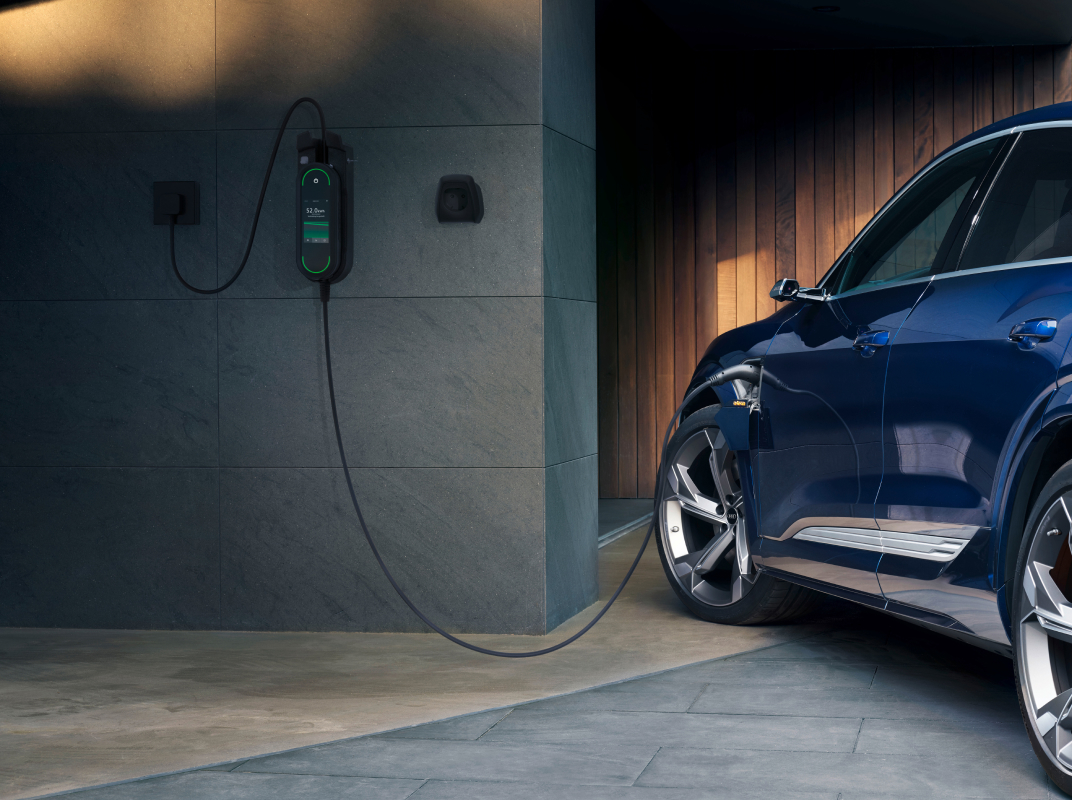Decentralised flexibility from electric vehicles
Intelligent charging in the standard load profile is successful
- Pilot project by TransnetBW, Audi and IE2S shows that efficient and economical integration of decentralised flexibility into the energy markets is possible
- Flexibilisation potential can be exploited through intelligent charging in the standard load profile
- Smart meters or dynamic electricity tariffs are not necessary
Without an intelligent metering system (smart meter), grid-friendly and intelligent charging of electric vehicles is currently hardly possible, as the shifting of charging processes to periods with a high proportion of renewable energies and low wholesale electricity prices can neither be measured nor balanced and billed.
The transmission system operator TransnetBW, the car manufacturer Audi and the consulting firm Intelligent Energy System Services (IE2S) have therefore developed an innovative approach to utilise surplus electricity from renewable energies efficiently today and to provide owners of electric vehicles with a revenue opportunity for the provision of flexibility even without smart meters or dynamic electricity tariffs.
„With our approach of intelligent charging in the standard load profile, TransnetBW, Audi and IE2S have impressively demonstrated that efficient and economical integration of decentralised flexibility into the energy markets is possible. Depending on the equipment, a household with flexible consumption devices has the potential to flexibilise up to half of the household electricity consumption, with electric vehicles making the largest contribution. If the results of our pilot project are extrapolated to the year 2035, smart charging of electric vehicles could save around EUR 2 billion and avoid around 1 million tonnes of CO2 per year in Germany“, says Dr Rainer Pflaum, member of the TransnetBW Management Board, expressing his satisfaction with the project evaluation.

The potential for flexibilisation through intelligent charging in the standard load profile (iSLP) was first simulated with more than 800 digital vehicles (‘digital twins’) in a test environment and then successfully tested with around 20 real Audi brand electric vehicles. Smart charging enabled the electricity costs for charging electric vehicles to be reduced by 62%. This led to a 36% reduction in CO₂ emissions.
„We want the charging process to be as simple and convenient as possible for our customers. Thanks to intelligent charging, they benefit not only from CO2-optimised charging but also from particularly favourable prices. We are convinced that this option can accelerate the decision in favour of an electric car. The simulation with our partners TransnetBW and IE2S is therefore a valuable opportunity for us to verify technical feasibility.“
As part of the project, the economic and ecological potential was determined through simulations with digital electric vehicles. On the other hand, the technical feasibility of the developed solution was successfully demonstrated in an end-to-end test with real Audi vehicles. The concept envisages that deviations between actual electricity consumption and the standard load profile are balanced by intelligent charging in the differential balance circuit of the local distribution grid operator. This alternative balancing concept was successfully implemented during the field test by the project partners in cooperation with the local grid operators.
„Our joint solution proves that controlled charging is not only technically feasible, but also quickly scalable. By directly controlling the electric vehicle, the system can be seamlessly integrated into the user's everyday life - without any dynamic price tariffs, additional systems or intelligent metering equipment. This is a decisive step towards simpler, more efficient and more sustainable electromobility.
However, the current legal and regulatory framework does not provide for trading activities by transmission system operators outside of their existing tasks and therefore needs to be enshrined in law.”
The current regulatory and legal framework already enables distribution grid operators to balance and manage decentralised flexibility as part of balancing group management. The system tested in the project for measuring, controlling and forecasting flexibility could play a central role here. However, it remains questionable whether all distribution grid operators can and want to take on this task temporarily until the nationwide smart meter rollout has been realised. With less effort, the marketing and balancing of flexibility from decentralised consumption facilities could also be carried out centrally by the transmission system operators. However, the necessary regulatory framework would first have to be created for this.
The project partners see further potential for the further development of their approach in the consideration of grid-serving charging and, in the future, in the provision of control reserve by electric vehicles, in order to meet the restrictions and requirements of the electricity grid in particular for smart charging.
More information at:
https://www.transnetbw.de/de/unternehmen/portraet/innovationen/mobility4grid/islp